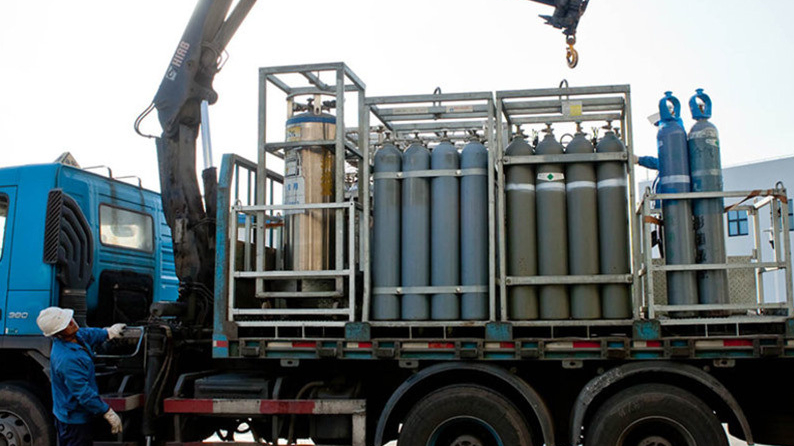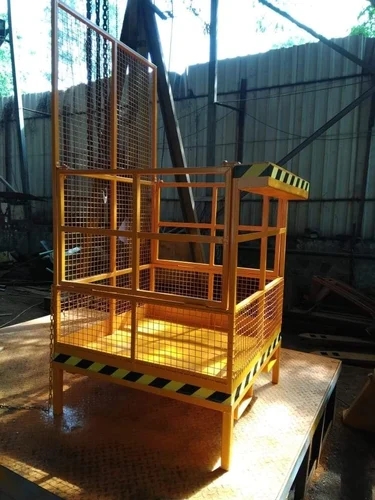In industries where elevation is a necessary task for maintenance, construction or other tasks, it’s important to have the right equipment. Part of these vital tools are the highly necessary crane cages. Often referred to as man cages, depending on the type, these are designed to be lifted by crane, providing a safe and efficient means of transportation for personnel and some other types of cargo to elevated work areas. They help improve productivity and operational efficiency, mitigating several risks such as the safe distribution of goods, the safe elevation of personnel.
Types of Crane Cages
Depending on the industry where the cage is needed there are several types, which are specifically designed for that purpose. Let’s look at some of these cages.
Transport Cage

This is a prevalent type of cage used across several industries. Its design focuses on providing a secure enclosure for safely storing and transporting different types of equipment, construction materials and other types of items by crane or a forklift. These cages feature heavy-duty construction and most of them have mesh sides and sheet material floor. Depending on the size of the cage, some can lift up to 2000kg of pallets or loose material and equipment.
Construction Cage

Construction sites often require specialised cages tailored to the unique demands of building projects. These cages may feature additional safety features such as harness attachment points or emergency descent systems to mitigate risks associated with working at height in a dynamic environment.
Platform Cages
Platform crane cages are made for tasks that involve extended periods of work at height such as maintenance or inspection activities. There are many different types of platform cages depending on the number of people that are allowed and where they are used from one person up to two people. Some of these cages feature mesh roofs for additional protection of the personnel. Many cages also feature fork arm slippers, but these slippers are provided for transport purposes only and not for working.
Where Can You Use These Cages?

These cages find applications across a wide range of industries and scenarios where work at height is required. Let’s look at some of these industries. Number one on the list is construction sites. Since there are specially designed cages for construction, logically, they are used there. Construction projects often involve working at considerable heights necessitating the use of cages to transport materials and tools to upper levels as well as platform cages for the personnel to perform different tasks.
Places such as refineries, industrial facilities and manufacturing plants among others often have elevated equipment and structures that require regular inspection, maintenance and repair and these cages provide a secure way for the personnel to do these inspections and repairs efficiently while minimising risks associated with working at higher places.
These cages can also be found in big warehouses where efficient transport is needed. Places that have a lot of products need cages like this so that they can successfully and efficiently move said products from one place to another. And last but not least, utility companies are some places where these cranes are needed. The personnel of these utility companies need to access components such as power lines or transmission towers which aren’t easily accessed, and this is where these cages come in handy.
Another great use of these cages is in the storage facilities. Not only can they be used to transport the goods, but also to store them and depending on the size they can store a lot of goods. They can also be used for emergency or rescue activities. There are some specially designed personnel platform cages made specifically to be used for rescue procedures, which are designed with all-around mesh for a safe and successful rescue. So, as you can see the uses of the cages aren’t limited and they can be quite useful in many industries.
Safety Precautions
While these crane cages offer a safe means of transportation and work, it’s also important to observe strict safety precautions to reduce the risks of potential hazards. One of those precautions is proper training of the personnel. Each person who is going to be using these cages should undergo training on safe operating procedures, emergency protocols and even equipment inspections. Before using the cages you need to ensure that the cage is securely attached to the crane to avoid any potential accidents. The crane should also be inspected often to check for any damages. The personnel using the crane should wear appropriate equipment such as safety harnesses, helmets, gloves and non-slip footwear and the people working around the crane should also be wearing helmets to ensure proper protection and minimise the risks of any accident that could lead to serious injuries.
Cages play a vital role in facilitating safe and efficient work at height across various industries. Whether it’s construction, maintenance, inspection tasks or rescue missions, these tools provide a secure means of transportation of people and goods to different work areas while at the same time reducing the risks associated with working at height. Regardless of what you’re using the crane for, remember safety always comes first.